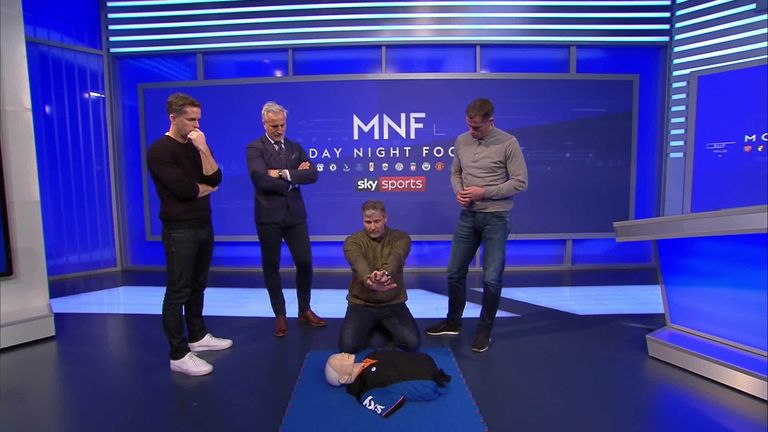
[ad_1]
The Newcastle fan who collapsed during the Premier League match against Tottenham was discharged from hospital on Tuesday.
Medics in the crowd rushed to help Alan George Smith, 80, after he suffered a cardiac arrest at St James Park on October 17.
Players from both Newcastle and Spurs were praised for alerting referee Andre Marriner, who stopped the game.
That allowed a defibrillator to be used after Accident and Emergency consultant Dr Tom Prichard – a fan close by – had performed CPR and used the defibrillator before paramedics arrived.
In a statement from Newcastle, it was revealed Smith is targeting a return to St James’ Park for either the visit of Norwich on November 30 or the clash with Burnley on December 4.
Smith required four stents to be inserted to aid his recovery, with son Paul describing the medical staff as “amazing” during his father’s stay at the city’s Freeman Hospital.
The Magpies supporter was released on Tuesday and will now spend the next two to four weeks building up his strength at home.
A statement on Newcastle’s website read: “He is looking forward to seeing family and friends over the next few days and sends his appreciation to everyone who has wished him well.
“His local Constitutional and Unionist Club in Forest Hall, of which Mr Smith is president, will be launching a fundraising event from November 13 to purchase a defibrillator, having seen how important they can be.”
What is CPR and how do you perform it?
CPR stands for cardiopulmonary resuscitation and is a medical technique that is given to someone who goes into cardiac arrest.
That occurs when the heart encounters an electrical issue and stops pumping blood around the body and to the brain, causing the person to fall out of consciousness and stop breathing.
Medics define this as ‘clinical death’, which is the onset of biological death, although CPR can help re-start the person’s heart functions and save their life.
By administering chest compressions and rescue breaths, the CPR performer helps to pump blood and oxygen around the person’s body, taking over the role of their heart and lungs.
Always seek professional help by calling 999 before starting CPR. The NHS’s advice to carry out chest compressions is as follows:
- Place the heel of your hand on the breastbone at the centre of the person’s chest. Place your other hand on top of your first hand and interlock your fingers.
- Position yourself with your shoulders above your hands.
- Using your body weight (not just your arms), press straight down by 5 to 6cm (2 to 2.5 inches) on their chest.
- Keeping your hands on their chest, release the compression and allow the chest to return to its original position.
- Repeat these compressions at a rate of 100 to 120 times a minute until an ambulance arrives or you become exhausted.
The British Heart Foundation recommends that in an emergency situation it is better to try and perform CPR, even if unsure, rather than to not do anything at all.
[ad_2]
Source link
